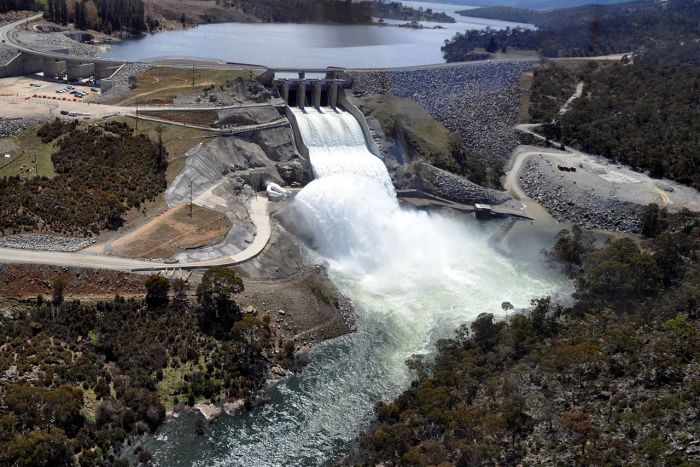This has been a swashbuckler of a week for Australian energy policy.
First there were $100 million bets on energy storage by billionaire entrepreneurs, then the launch of a new South Australian energy plan, followed hot on the heels by Victoria, with both states making further commitments to renewable technologies. In the latest foray into a week where energy storage (particularly battery storage) has dominated the Australian media – Malcolm Turnbull has announced a plan to spend up to $2 billion dollars to incorporate pumped hydro energy storage onto the Snowy Hydro scheme.
Turnbull’s pumped. Should we be? Let’s have a look at what pumped hydro energy storage is and what its potential benefits are to tackling climate change.
Energy storage technologies like battery storage and pumped hydro – but also heat storage in solar thermal plants, flywheels, fuel cells and compressed air – are all complementary technologies which can enable increased amounts of wind and solar power, because it allows excess power from the grid to be stored at times of high wind and sun, and used later when needed.
Storage, including pumped hydro is critical to tackling climate change and storing renewables. The critical issue with Turnbull’s idea is that he is proposing a storage solution but has not accompanied it with a generation policy. At this stage energy being stored would be from polluting coal fired generation. For the project to be valuable it must be accompanied by a policy to grow Australia’s clean energy resources.
What exactly is pumped hydro energy storage?
Pumped hydro energy involves storing water in an upper reservoir which has been pumped from a lower reservoir. During periods of high electricity demand, power is generated by releasing the stored water through turbines. While during periods of low demand, the upper reservoir is recharged by using lower-cost electricity from the grid to pump the water back to the upper reservoir.

Image:NSW Office of Water
Pumped hydro energy storage is a technology that has existed for more than a century, with over 40 countries currently using this technology.
Australia has three large-scale pumped hydro facilities all built between 1973 – 84:
- Tumut-3, Snowy Mountains, New South Wales (1973)
- Shoalhaven, southern New South Wales (1977)
- Wivenhoe, southern Queensland (1984).
Pumped hydro energy storage can potentially be built in a location where there are two reservoirs separated by significant height. It could be:
- The ocean and a dam on cliffs above
- A small reservoir above a main dam
- The main dam above a dam exit pond
Pumped hydro can store energy from fossil fuel energy sources or from renewable sources.So does energy storage reduce electricity emissions?
It depends on the source of electricity or energy being stored. If it’s fossil fuels then no, as they are highly polluting. Whereas renewables (solar and wind) do not emit any emissions.
The Renewable Era
Energy storage will be a crucial technology as Australia and the rest of the world transitions to renewables, in the Renewable Era. And pumped hydro is going to figure significantly. However, the cost of storage and the size of storage amongst other factors will determine the mix over time. It could also take up to a decade to build a pumped hydro energy scheme.
Should we be pumped like Turnbull?
Only if pumped hydro energy storage is connected to renewables, and if it’s backed by a lot more wind and solar investment. Otherwise it’s actually far worse for emissions, if the energy used to pump the energy uphill comes from fossil fuels.
The Climate Council welcomes investment into pumped-hydro, but it must be accompanied by a national plan to transition from fossil fuel generation to renewables.